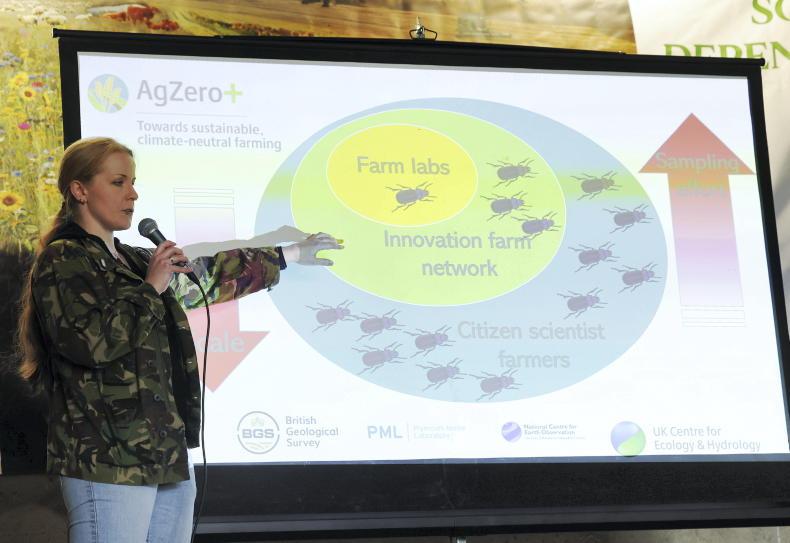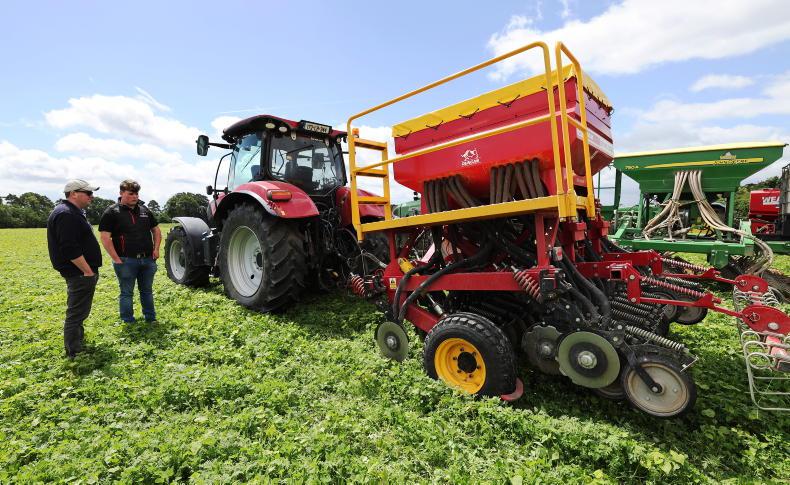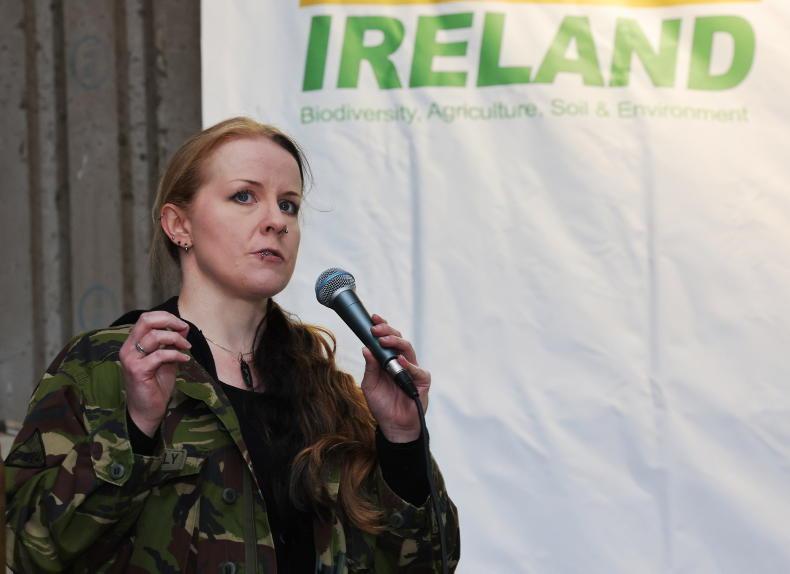Farmers may be most familiar with beetles that are pests, such as the cabbage stem flea beetle. However, most beetles are beneficial to farming systems. They are often under-appreciated despite the many services that they can provide to agriculture, such as pollination, pest, parasite and weed control, nutrient recycling, and soil structure improvement. This was the message from Dr Kelly Jowett, an entomologist from Rothamsted Research in the United Kingdom.
Farmers may be most familiar with beetles that are pests, such as the cabbage stem flea beetle. However, most beetles are beneficial to farming systems.
They are often under-appreciated despite the many services that they can provide to agriculture, such as pollination, pest, parasite and weed control, nutrient recycling, and soil structure improvement. This was the message from Dr Kelly Jowett, an entomologist from Rothamsted Research in the United Kingdom.
Speaking at BASE Ireland’s Soil Dependence 2024, she explained to the crowd the role that carabid and dung beetles play in our agricultural systems. There are 211 carabid beetle species in Ireland, ranging from 4mm to 3cm in length. Some species may fly while others do not.
She described carabid beetles, also known as ground beetles, as the “hyenas of the beetle world” as they are fierce scavengers with different species specialising in eating different things.

Dr Kelly Jowett speaking about the benefits of beetles to soil at Soil Dependence. \ Lorraine O’Sullivan
Some species specialise in the predation of slugs, leatherjackets, aphids and cabbage stem flea beetles, while other species are weed eaters.
Dr Jowett told the audience the astonishing fact that carabid beetles may eat up to 4,000 weed seeds/m2/day. She also noted that the carabid larvae which hatch from eggs laid in the soil are important predators.
As part of her PhD, Dr Jowett examined spillover effects. This is the idea that there will be more carabid beetles near field boundaries and numbers will decrease as you move to the centre of the field. However, she found that numbers were similar at field boundaries and in field centres, but the species were quite different.
She found that any increase in numbers near field boundaries was due to an increase in weed seeds in the soil at the edges of fields.
Dr Jowett also looked at the effect of field margins on carabid beetles. Surprisingly, she found that grass margins act as a barrier and actually reduce the number of carabid beetles in the field.
Similarly, the carabid beetles do not like wildflower margins. However, Dr Jowett stresses that this does not mean field margins are not good, as many other types of insects and pollinators thrive in these margins.
Considering where field margins are placed may be more important, such as locating them beside a road or urban area to buffer the negative effects of these areas.

Paddy Byrne and Conor Byrne beside a Duncan direct drill. \ Lorraine O’Sullivan
A range of habitats is also needed for carabid beetles as they migrate on a daily and annual basis.
Carabid beetles are said to be quite robust to pesticides, including slug pellets, but there may be effects on their breeding and feeding habits.
However, insecticides are still extremely damaging. The banning of neonicotinoids was a very positive move for carabid beetles as it was one of the worst culprits. Dr Jowett also noted that organic systems are very beneficial to some species.
How to increase beetle levelsDr Jowett outlined what tillage farmers can do to support carabid beetle populations.
Reducing tillage as much as possible can protect the larvae in the soil, while cover crops, companion crops and the under-sowing of cereals with clovers or grass can all benefit populations with a more varied habitat and more food sources for the adult beetles.
She recognised that these measures are not possible in all situations, but it gives farmers an idea of how they can help these beetles to thrive so that the benefits that they provide can be maximised.
Dr Jowett also discussed dung beetles with the audience. While many people may be familiar with dung beetles on documentaries that roll animal manure along the ground, these species are not present in Ireland.

Dung beetles offer huge potential in reducing anthelmintic resistance on Irish farms. \ Dung Beetles for Farmers
Our native dung beetles usually burrow into a pile of animal manure, and then tunnel through the soil, bringing the dung with them. These beetles are on the decline, and as they save the UK agricultural industry over £367m (€435m) every year, Dr Jowett would love to see this decline reversed.
These dung beetles can reduce greenhouse gas emissions by the burial of the animal dung. They also improve nutrient recycling and soil fertility. However, they are very vulnerable to anthelmintics, with ivermectin being one of the worst anthelmintics for dung beetles. Therefore, Dr Jowett advises farmers to use faecal egg counts before using wormers on their animals.
She also says that multispecies swards can improve the nutrient quality in animal dung, which can then support dung beetles. Mob grazing is also beneficial, as is keeping animals outdoors during the winter. If animals are brought indoors, there will be no food source for the dung beetles.
The resulting slurry is not very beneficial to the beetles as it does not provide an adequate habitat for them to burrow into.
Transition
Dr Jowett’s research is part of the AgZero+ project, which aims to support a transition towards sustainable, carbon neutral and nature-friendly farming. To do this, Dr Jowett is working with farmers to see what their needs are and to ensure that her research makes a real difference to farmers.

Dr Kelly Jowett. \ Lorraine O’Sullivan
For more information or to learn how to identify carabid beetles, farmers can visit agzeroplus.org.uk or email kelly.jowett@rothamsted.ac.uk. There is a “Farmland Carabids” tool to support farmer monitoring, available in app stores as part of the ‘E-Surveyor’ app.





SHARING OPTIONS: